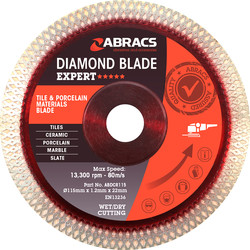In the past I have used a wet cutter but I have just invested in a Big Clink dry cutter. I’m cutting 600mm x 300mm ceramic tiles. On the short edge they cut fine but on the longer edge I’m having difficulty. The tiles snap neatly at the top but not at the bottom. Any tips or thoughts as to if or what I’m doing wrong?
I’m also fixing the tiles with Mapei D2 but it seems to be taking days to cure. It’s a new build with no heating. I’m using a size 10 notched trowel and dragging it across the wall at about 45 degrees giving around a 3mm bed
Is this normal?
Thanks all
I’m also fixing the tiles with Mapei D2 but it seems to be taking days to cure. It’s a new build with no heating. I’m using a size 10 notched trowel and dragging it across the wall at about 45 degrees giving around a 3mm bed
Is this normal?
Thanks all



